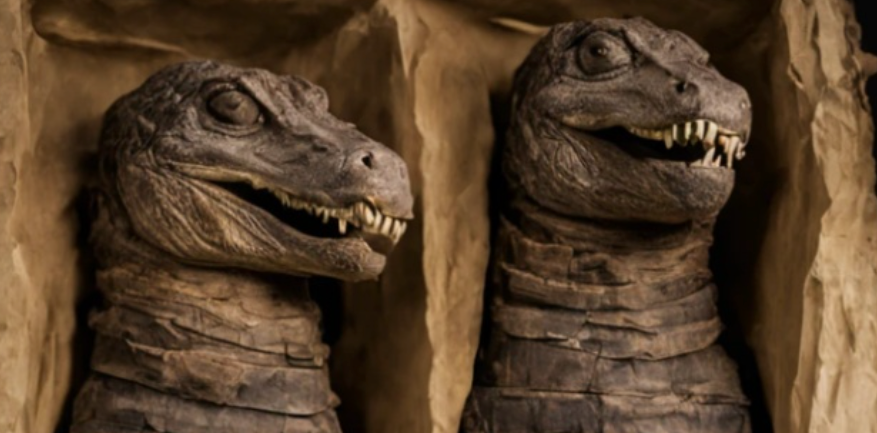70 Million Mummified Animals in Egypt Reveal Dark Secret of Ancient Mummy Industry
- mystery
- June 13, 2024

In the shadow of Egypt’s majestic pyramids and sprawling temples, a startling discovery has illuminated a dark chapter in ancient history. Archaeologists, exploring a labyrinthine network of catacombs deep beneath the sands, unearthed a staggering trove: the mummified remains of over 70 million animals.
This unprecedented find has revealed the extent of an ancient industry dedicated to the mummification of animals—birds, cats, crocodiles, and more—that flourished alongside the practice of human mummification in ancient Egypt. The animals, revered as sacred beings associated with various gods and goddesses, were meticulously embalmed and entombed as offerings to the divine.

Dr. Amira Khalid, the lead archaeologist on the excavation, described the discovery as “jaw-dropping” and “unparalleled in scale.” The catacombs, hidden from the world for millennia, contained row upon row of carefully arranged animal mummies, some adorned with gilded masks and intricate wrappings.
The mummified animals, preserved in astonishing detail despite the passage of millennia, provide a glimpse into the religious beliefs and rituals of ancient Egyptian society. They were believed to serve as intermediaries between humans and the gods, conveying prayers and petitions for divine favor.

Yet, alongside this reverence for the sacred, the discovery also sheds light on a darker aspect of ancient Egypt’s mummy industry. The sheer number of animal mummies suggests a highly organized and commercialized enterprise, where priests and artisans mass-produced these revered artifacts to meet the demand of devout worshippers.
Further analysis of the mummified animals, using state-of-the-art imaging and genetic techniques, promises to unravel additional secrets. Researchers hope to uncover clues about the species, their origins, and the methods used in their mummification, offering new insights into ancient Egyptian technology and cultural practices.

The discovery has sparked international fascination and debate among archaeologists, historians, and ethicists alike. It raises questions about the ethical implications of mass mummification and the treatment of animals in ancient societies, as well as the enduring legacy of these practices on modern archaeological understanding.
As excavation and analysis continue, the catacombs of millions of mummified animals stand as a testament to the complex and multifaceted nature of ancient Egyptian civilization. They offer a poignant reminder of humanity’s enduring quest for spiritual connection and understanding, preserved in the silent guardianship of countless animal mummies hidden beneath Egypt’s sands.








